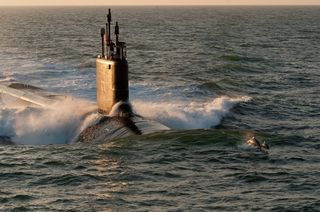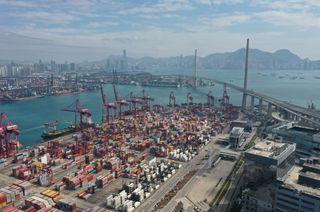The Australian
By Robert Hill and Bates Gill
With 600 Australian military personnel deployed in the Middle East to carry out missions against the Islamic State, we are reminded again of the close — and increasingly global — defence and security partnership with the US. However, it is often overlooked that today’s relationship between Australia and the US is much more than a military alliance.
The defence alliance remains a core component of Australia-US ties, but since the ANZUS Treaty was signed in 1951, the relationship has undergone profound changes. Australia and the US are broadly aligned on international outlook, working together to maintain global and regional stability and strengthen the rules-based global liberal international order.
The Australia–US free trade agreement, launched in 2005, has been a remarkable success. Last year, US investment in Australia reached $658 billion, making it our largest investor by far (20 times bigger than China). Australian investment in the US totalled nearly $472bn.
Australia and the US are now critical partners in providing energy security — with significant US capital investment in the Australian energy sector. The partnership guarantees energy supplies at competitive prices to Asia, fuelling regional growth.
Challenges remain, with jihadist threats the greatest immediate concern, closely followed by the need to ensure continued stability in Asia. Looking ahead, we must leverage economic endowments to compete in industry and innovation.
How do we address these hurdles in austere budgetary times, when demographic changes mean young and immigrant populations are less attached to the US–Australia relationship?
Three years’ collaboration at the most senior levels, conducted as part of the Alliance 21 project led by the US Studies Centre at the University of Sydney, has determined three strategic guideposts for our governments.
First, challenges will be more effectively addressed through even closer partnership. Second, Australians and Americans should increasingly work together in Asia as the principal region to expand our partnership for mutual benefit. Third, while a closer partnership will have a defence and security component, it must be more comprehensive.
To strengthen the partnership, Canberra and Washington should institute more formal and regular strategic consultations between the two heads of government. In addition, the public and private sectors in both countries need to invest in public support for the alliance through expanded research, education, and exchanges, focusing on engaging emerging young leaders.
Separately, the US and Australia should redouble their efforts to realise a more open trade and investment environment in Asia, focusing on negotiating the Trans-Pacific Partnership trade deal as an inclusive agreement, aiming for the accession of China, South Korea and Taiwan.
We also should deepen economic, scientific and policy co-operation to meet Asia’s food and energy security needs.
Finally, Australia needs to make a more equitable contribution to defence and security activities, and interoperability and complementarity between our defence forces must be a priority — including the Australian submarine program. For the US, given the massive imbalance in defence procurement in its favour, greater priority should be placed on purchasing competitive products from the Australian defence industry.
But as our forces once again prepare to fight alongside each other, we should remember that military co-operation is only part of a partnership with few equals in the world.
This article was originally published at The Australian




